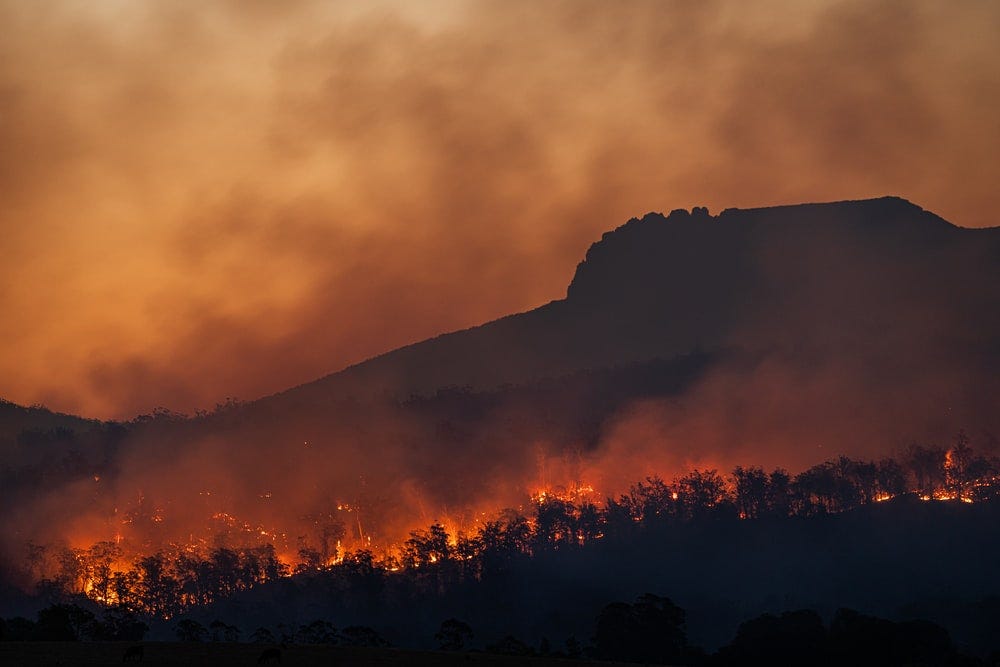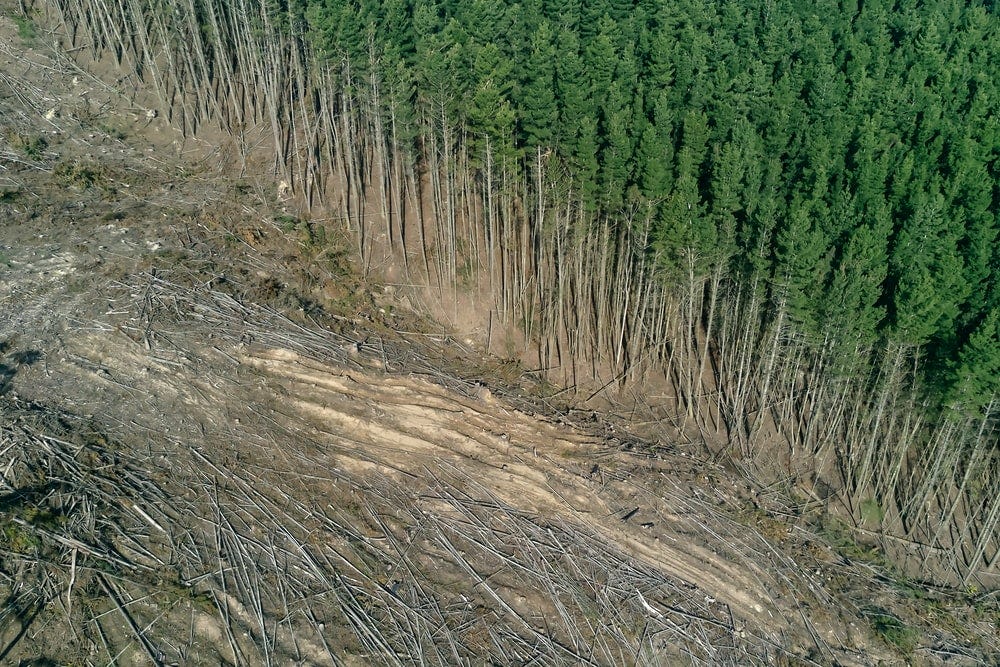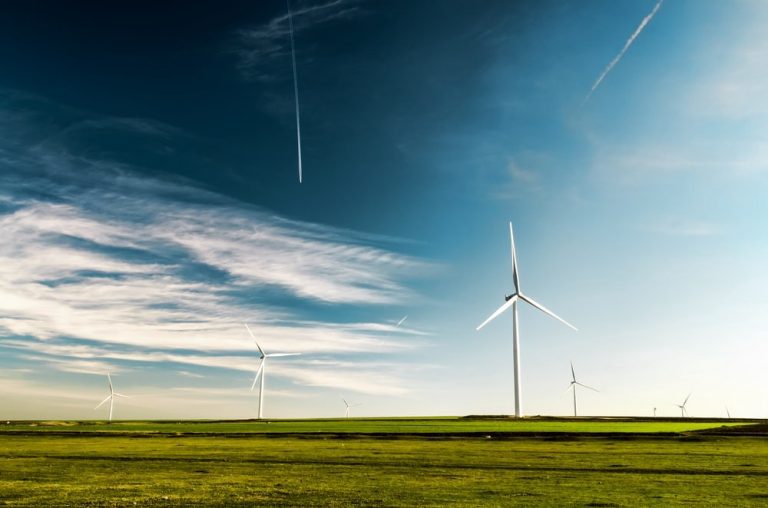It’s apocalyptic in every sense of the word. It is obvious that the world is reeling in a stream of natural disasters. These would not have happened unless it was the result of climate change. The world as a whole must raise itself to positive actions beyond the vested interests of climate change denial. CLF Services have undertaken research to look at the current state of sustainable energy and what is likely to happen in the next ten years.
One does not have to look very far in the past to perceive the uninhibited reality of climate change. End-of-the-world natural events are beginning to show up at an alarming rate. Only a few days ago, a province in China received one year’s worth of rainfall in a single day[1]! This followed on the heels of catastrophic flash floods in Germany and Belgium. Towards the end of June 2021, the temperature in the Canadian city of Lytton recorded an unbearable 49.6 degrees Celsius[2]!
The World Wide Fund for Nature Australia ranked the wildfire season of 2019-20 as one of the worst wildlife disasters in modern history. Forty-six million acres of forest land was scorched, and an estimated 1.25 billion animals perished in the inferno[3].

The Australian scenario
Unfortunately, these disasters are man-made, directly or indirectly. The way things are right now, unless massive positive actions are not taken, the world would go past the tipping point. This point of no-return is closer than one would care to admit beyond the bubble of air-conditioning and home theatre. The latest report from the United Nations Intergovernmental Panel on Climate Change, published in August 2021, described the situation as “code red for humanity.[4]”
What’s urgently needed is political goodwill driving a worldwide shift to a green energy future. Also, it would not be possible without raising public consciousness. As more and more people become open to the idea of renewable energies, it would eventually turn out to be a major game-changer. This report focuses its narrative on the Australian scenario, projecting it as an ideal case study for actions taken to reverse the effects of climate change. The following sections aim to describe the future of Australia as a renewable energy superpower.
Positive Impact of Renewable Energy
Before trying to reverse climate change, it is crucial to understand how it is happening. The three main drivers of catastrophic climate change are greenhouse gas emissions, plastic pollution, and deforestation. All of these can be connected to a singular phenomenon, fossil fuel dependence.

The extraction of petroleum and coal from the earth’s core is causing massive swathes of forests to disappear, and their uninhibited combustion is resulting in global warming. A massive portion of petroleum by-products is being used in the production of non-biodegradable plastic, which is disrupting the balance of nature in both urban and rural landscapes.
Therefore, shifting to renewable energy is hailed as the singular most effective solution to upend the adverse effects of climate change. It would automatically put a stop to deforestation and plastic pollution.
Reduced emission of Greenhouse Gases
The emission of carbon dioxide from the combustion of fossil fuels has resulted in the infamous greenhouse effect on the earth’s atmosphere. It has been linked to the melting of polar glaciers, rise in sea level, droughts, and increase in global temperature. In stark contrast, the use of renewable energy resources creates a significantly lesser amount of CO2. However, the positive effect is most pronounced in the solar and wind-powered sectors. Combustion of biomass is not so effective in reducing greenhouse gases.
Major improvement in public health
Environmental pollution has been linked to several public health concerns. It can directly cause adverse effects on cardiac health, the respiratory system, and the nervous system. It is also linked to cancer. Polluted food and water can be actually attributed to causing all kinds of health problems. The extraction of fossil fuels is a major reason for water pollution. On the other hand, the production of renewable energy such as solar and wind puts very little stress on water and land resources.

Unending supply of energy
Renewable energy harvesting, particularly solar and wind, results in an unending supply of energy because both depend on freely available resources. All it takes is the installation of renewable energy infrastructure at locations where sunlight and wind are abundant.
This ultimately leads to lower energy costs for the consumers, which is a win for everyone including electricians, leading to a higher standard of living. The reliability of resources also marks renewable energy ventures as highly profitable. Coal and petroleum supply will be exhausted one day, but there will always be abundant sunlight and wind.
Green energy economy
The use of renewable energy has opened up new vistas of employment. It has the potential to create millions of jobs all over the world. Right from their setup to maintenance, working in the renewable energy sector is highly promising. In addition, experts foresee a massive demand for renewable energy resources for home use, especially PV cells.
Different types of renewable energy sources in Australia
Australia has been at the forefront of renewable energy implementation. The country has seen major developments in recent years, all set to cause a major shift in the energy production scenario. Government data from the 2018-19 financial year represents the following percentage share of renewable energy usage in Australia[5].
Renewable energy source. Percentage share.
Solar PV 13.4%
Solar hot water 4.4%
Wind 16.0%
Hydro 14.4%
Biofuels 1.9%
Biogas 4.1%
Biomass 44.8%
The report also indicates that solar PV cells have shown the most remarkable trajectory of growth in a ten year period ending in 2019. It grew by 48.4% in this phase. Consumption of wind energy has increased by 15.0%. Hydropower has grown by 1.8%. The use of Biofuels such as ethanol and biodiesel has decreased by 3.2%. The use of biomass as a renewable energy source has reduced by 0.1% in a ten-year period.
Twenty-two percent of the biomass comes from wood, and it is still an indicator of deforestation. Besides, the combustion of biomass does contribute to global warming significantly.
Major changes are observed all over Australia
One of the major developments in progress is called the Asian Renewable Energy Hub. Reported as the world’s largest power station in the making, this hub is located in the remote northeast region of Australia. It is estimated to be half the size of greater suburban Brisbane. When built in full, it would consist of a 78 sq. km array of solar panels and an additional 1,600 giant wind turbines. The hub is estimated to generate 26 Gigawatts of electricity, surpassing the entire coal power fleet of Australia. For the most part, it will run 14 GW electrolysers converting desalinated seawater into ‘green hydrogen.’ Green hydrogen is recognised as a major fossil fuel alternative in the coming years. It was reported last year that the site would still take five years to complete. The Federal Government also granted it a major project status, easing out the roadblocks to undertake such an ambitious project[6].

Last year also saw several other major developments that clearly point to a major shift towards renewable energy. The New South Wales administration announced its plans to underwrite 12 GW of renewable energy and 2GW of storage for the next decade. Woolworth has committed to run its operations 100% on green energy within the next five years. AustralianSuper, the biggest super fund in Australia, targets a net-zero emissions investment portfolio by 2050. The Fortescue Metal Group made it clear that the company intends to build green energy infrastructure capable of generating 235 GW across the globe in the coming years.
Negative impacts of green energy
There are certain challenges to be overcome in the implementation of green energy, according to CLF Services. It is important to clear the confusion that renewable energy does not have a carbon footprint. Even solar and wind panels have carbon footprints, but they have something called the ‘energy payback period.’ This refers to the time needed to produce the same amount of electricity used in their life cycles.
Wind turbines are known to recoup their carbon footprints within six months of continuous operation. Solar panels can take 1 to 3 years to recoup their embodied carbon footprint. With the increased use of renewable energy in the production sector, the carbon footprint of manufacturing green energy components will shrink.
One of the major issues that Australia faces in the renewable energy sector is its dependence on biomass fuel. Besides being a reason for deforestation, biomass production creates huge quantities of Methane, which is a harmful Greenhouse gas. Combustion of wood also releases Carbon monoxide, Nitrous oxide and Carbon dioxide into the atmosphere.
Another major drawback of Green energy is the requirement of significant capital costs in the setup of production and storage units. However, none of these disadvantages makes a strong case against its use. Instead, it is important to realise that sooner or later, the world has to shift to renewable energy by default if mankind is not to suffer extinction.
To wrap it up
The renewable energy trajectory in Australia is highly promising. Even in 2020, when the world was shut down by COVID, the green energy sector in Australia recorded significant improvement. For the first time, more than a quarter of the country’s total electricity generation came from renewable energy (27.7%). There’s a long road ahead, and all stakeholders should come together to make it possible[7].
Local companies like CLF services in Brisbane also have big roles in making sure that green energy reaches every household. Contact CLF services today to reduce your carbon footprint and play your part in Australia’s green energy mandate.













